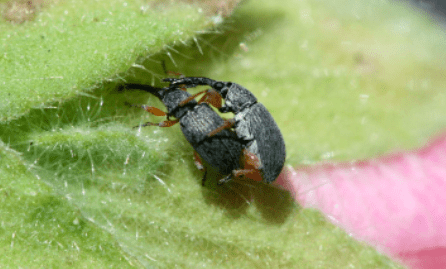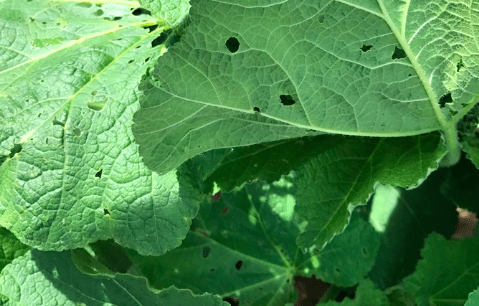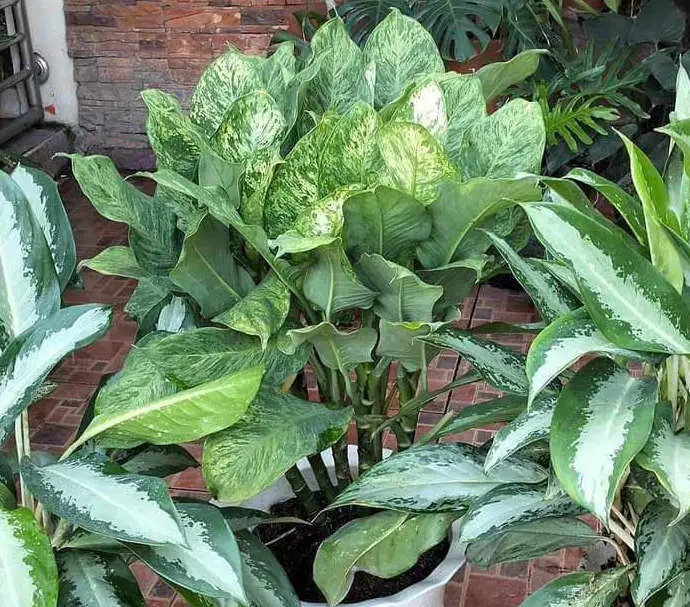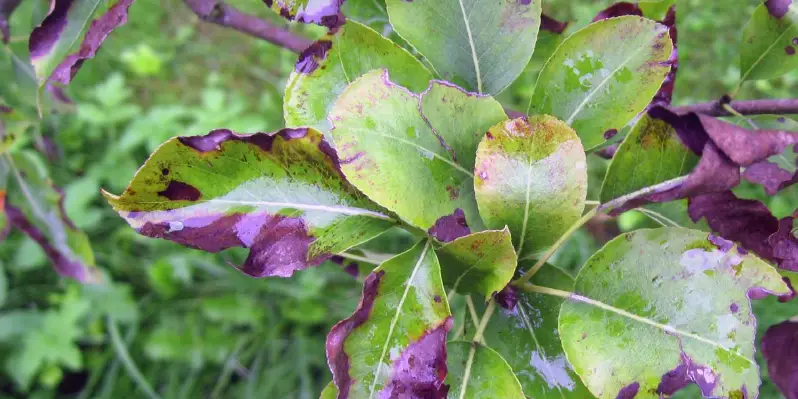Do you have a hollyhock plant in your garden? If so, you may have noticed that the leaves are starting to develop holes. This can be a sign of problems with your plant, and it’s important to figure out the cause of the holes so you can address it. In this blog post, we will discuss the possible causes of holes in hollyhock leaves and provide solutions to help you fix the problem!
Why Are There Holes in My Hollyhock Leaves?
There are holes in your hollyhock leaves because pests are eating them! The most common culprits are Hollyhock weevils, Japanese beetles, slugs, and caterpillars. These pests are attracted to hollyhocks because they offer a tasty meal of leaves.
The Hollyhock weevil is a notorious pest of hollyhocks. The adults are small, black beetles with long snouts. They lay their eggs on the undersides of hollyhock leaves, and when the larvae hatch, they immediately start feeding on the leaves. This can cause severe damage to your plant, and if you have a heavy infestation, it can even kill the plant.
You may not even know you have a problem with Hollyhock weevils until you see the damage they’ve done. The first sign of trouble is usually small, round holes in the leaves. These holes will get bigger as the larvae continue to feed. You may also see the adults crawling on the leaves or flying around your plant.

How to Treat Hollyhock Leaves with Holes?
To tackle a Hollyhock weevil infestation, you’ll need to use a combination of cultural controls and chemical controls.
Cultural controls involve changing the conditions around your plant to make it less attractive to pests. For example, you can remove debris and weeds from around the base of your hollyhocks. This will reduce hiding places for adult weevils and make it easier for you to spot them. You can also try planting your hollyhocks in a different location next year.
Chemical controls involve using pesticides to kill the pests. There are many different types of pesticides available, so be sure to read the label carefully and choose one that will get rid of Hollyhock weevils. You may need to apply the pesticide more than once to achieve complete control.
My favorite method of pest control is to use neem oil (Amazon link), which is a natural pesticide made from the neem tree. It’s safe to use around children and pets, and it’s very effective at killing pests. You can find neem oil online or at your local garden center.
Simply mix the neem oil with water according to the directions on the bottle, and then apply it to your hollyhock leaves. Be sure to cover the undersides of the leaves, where the weevils are likely to be hiding. You’ll need to reapply the neem oil every few days until you’re sure all of the weevils are gone.

How to Keep Pests Away From Hollyhock Leaves?
Once you’ve gotten rid of the Hollyhock weevils, you can take steps to prevent them from coming back.
One way to do this is to use row covers to protect your plants. Row covers are pieces of fabric that you can lay over your plants. They create a barrier that pests can’t penetrate, but they allow sunlight and water to reach the leaves.
It’s always a good idea to keep your garden clean. This means removing debris and weeds on a regular basis. It also means disposing of any dead plants or leaves. Pests are attracted to gardens that are full of hiding places, so keep yours clean and tidy to help deter them.
What Else Causes Holes in Hollyhock Leaves?
It’s not just pests that can cause holes in hollyhock leaves. Let’s look at a few more possible causes:
Disease
Hollyhocks can be affected by a number of diseases, including rust and powdery mildew. These diseases can cause the leaves to develop spots or holes. If you think your hollyhocks have a disease, take a sample of the affected leaves to your local cooperative extension office for diagnosis.
Animals
Sometimes, animals will eat hollyhock leaves. This is most likely to happen if the plants are growing near a fence or other structure that provides a way for the animals to climb up. The best way to prevent this from happening is to block off the area around your hollyhocks so that animals can’t get to them.
Should I Prune Hollyhock Leaves with Holes?
I recommend only pruning away the leaves that are affected by diseases. If you prune too much, it will stress the plant and make it more susceptible to problems.
Simply remove the affected leaves and dispose of them far away from your garden. Be sure to sterilize your pruning tools before using them on other plants to prevent the spread of diseases.
Conclusion
So, pests are one of the most common causes of holes in hollyhock leaves. But there are other potential causes, too. If you’re not sure what’s causing the holes in your hollyhocks, take a sample of the affected leaves to your local cooperative extension office for diagnosis.
Once you know what’s causing the problem, you can take steps to get rid of the pests or treat the disease. And, most importantly, you can take steps to prevent the problem from happening again in the future.
Do you have any tips for preventing holes in hollyhock leaves? Share them in the comments below!
Tim is an avid gardener from the UK. He was the founder of PlantCarer.com from 2021 to Sep 2023. He sold PlantCarer.com to Aaron. He has since started his own business called Seed To Supper, which provides new gardeners all the materials you need in a box (pots, seeds, compost and instructions) to grow your own delicious and nutritious vegetables and herbs from start to finish – no garden required.








0 Comments